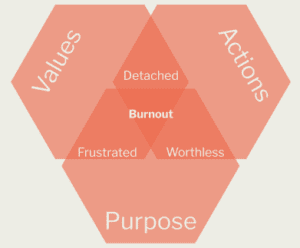
Understanding Volatile, Uncertain, Complex, and Ambiguous (VUCA) Business Landscapes
In today’s dynamic and ever-evolving business world, organisations face an array of challenges stemming from VUCA environments. VUCA, which stands for Volatility, Uncertainty, Complexity, and Ambiguity, characterises the unpredictable nature of the business landscape. At The Hive, we understand the need to comprehend and navigate these complexities, and in this article, we delve into the meaning of VUCA, explore its environmental influences, shed light on the challenges it presents to businesses, and provide strategies to overcome them.
Understanding VUCA Environments:
This isn’t something new, but in our interconnected world it quickly became part of the vocabulary among successful business leaders across the globe in recent years. The VUCA term was first introduced by economists and university professors in 1985, then adopted by the U.S. Army in 1987, before making its way into the mainstream business world shortly after the millennium. But what does VUCA really mean to modern business leadership?
What does VUCA mean? A VUCA environment refers to a business landscape characterised by the following dimensions:
Volatility: Volatility, in the context of today’s dynamic and interconnected world, signifies the essence of rapid and unpredictable changes that constantly sweep through facets of the market, technology landscape, and consumer behaviour. It encapsulates the inherent uncertainty and turbulence that organisations encounter, necessitating a proactive and agile approach to effectively manage and respond to these dynamic shifts to maintain their competitive edge.
Uncertainty: Uncertainty in a VUCA environment implies that the future is no longer predictable or easily forecasted. In a VUCA environment, there are various factors and variables that make it challenging to determine outcomes with certainty. Organisations must learn to embrace uncertainty, make informed decisions based on limited information, and adapt swiftly to changing circumstances.
Complexity: Complexity denotes the intricate and interconnected nature of systems within a VUCA world. It emphasises the understanding that various factors, both internal and external, can influence each other and create complex relationships and interdependencies. Leaders need to develop a holistic perspective that considers these complexities and navigate through them effectively.
Ambiguity: Ambiguity characterises the lack of clarity and the presence of multiple interpretations in a VUCA environment. It means that there are often no clear-cut answers or straightforward solutions to the challenges faced. Leaders must embrace ambiguity, maintain a growth mindset, and rely on intuition to make sound judgments amidst uncertain and ambiguous situations.
Influences on VUCA Environments:
Numerous factors contribute to the emergence of VUCA environments, including:
Globalisation and interconnectedness: Globalisation and interconnectedness have transformed the business landscape, creating a web of interdependence that spans across economies and markets worldwide. This interconnectedness has far-reaching implications for businesses, as external events now hold the power to significantly influence their operations and outcomes. As a result, organisations face heightened levels of volatility, uncertainty, and complexity, necessitating the need for constant monitoring and proactive response to global trends. In this era, businesses can no longer afford to operate in isolation, but must embrace a global perspective and adapt to the ever-changing dynamics of the interconnected world.
Technological advancements: The rapid pace of technological innovation and digital transformations has ushered in an era of unprecedented volatility and uncertainty for businesses worldwide. This ever-evolving landscape demands constant adaptation and a proactive approach from organisations. With emerging technologies like artificial intelligence, blockchain, and the Internet of Things (IoT) gaining momentum, industries face the constant challenge of staying ahead of the curve and harnessing the transformative potential of these advancements.
Economic and political shifts: Economic fluctuations, political instability, and policy changes strongly impact the VUCA nature of business environments, generating uncertainty that affects market dynamics, consumer behaviour, and regulatory frameworks. These factors create an unpredictable atmosphere, where businesses must navigate through constantly evolving conditions, adapt to new compliance requirements, and strategically respond to changing trends and challenges.
Social and cultural transformations: Changing social and cultural norms, values, and preferences contribute to complexity in business landscapes. Organisations must understand and adapt to evolving societal trends to remain relevant and sustainable. Embracing diversity, promoting inclusivity, and responding to shifting consumer preferences are crucial for businesses to thrive in this dynamic environment. By recognising and engaging with diverse cultures and perspectives, companies can forge meaningful connections, enhance brand loyalty, and gain a competitive edge.
Recognising VUCA Environments:
It is too easy to get caught-up in the day-to-day of running a company, managing teams, planning for meetings, and arm-wrestling with suppliers, losing sight of the bigger picture. Before you know it, you and your colleagues are facing a crisis and panic can set it. So it is important that modern leaders look up and around them, with a strategic view of their surroundings and their current business landscape, to avoid missing the signs that tell you to change course or put contingencies in place.
Observable Signs: VUCA environments are marked by rapid market fluctuations, disruptive technological advancements, unpredictable consumer behaviour, and frequent changes in industry regulations. For instance, rapid market fluctuations can manifest as sudden price swings, unpredictable demand patterns, and intense competition. Disruptive technological advancements, such as the emergence of artificial intelligence, blockchain, or the Internet of Things, can transform entire industries, forcing businesses to adapt or risk becoming obsolete. Unpredictable consumer behaviour is evident when trends shift unexpectedly, such as a sudden surge in demand for eco-friendly products or a decline in traditional brick-and-mortar retail due to the rise of e-commerce.These signs serve as early warnings of a VUCA environment, requiring attention and proactive responses.
Information and Feedback: By recognising signs of VUCA, businesses can enhance their comprehension of the challenges they confront. It is crucial to stay well-informed and collect feedback from diverse sources, including industry reports, market research, customer surveys, and employee perspectives. Through the identification of patterns, organisations can discern emerging trends and disruptive events that might have an impact on their industry. To facilitate agile decision-making, scenario planning can be employed, envisioning multiple future scenarios and formulating strategies to navigate each potential outcome. By embracing a VUCA mindset and analysing information from this perspective, businesses can adapt to changing circumstances, make well-founded decisions, and maintain a competitive edge in a swiftly evolving environment.
Stakeholder Engagement: Stakeholder engagement serves as a crucial conduit for valuable insights. By actively involving employees, customers, suppliers, and industry experts in decision-making processes, organisations can tap into a diverse range of perspectives and experiences. This inclusive approach fosters a culture of collaboration, innovation, and adaptability, enabling organisations to better understand and navigate the challenges posed by VUCA. Through effective stakeholder engagement, organisations can harness the collective wisdom of their stakeholders to make informed decisions, identify emerging trends, and seize opportunities for growth and resilience in a dynamic business landscape.
Overcoming VUCA Challenges:
In the ever-evolving and unpredictable realm of modern business, organisations are confronted with a plethora of obstacles stemming from the relentless forces of VUCA. To traverse this dynamic landscape and emerge triumphant, businesses must embark upon a transformative journey that embraces a proactive and dynamic mindset. This captivating voyage entails charting a strategic course through astute planning, cultivating a thirst for continuous learning and adaptability, fostering innovation and creativity, nurturing collaboration and cross-functional teams, embracing agile decision-making, forging strategic partnerships, and nurturing the development of talent and resilience.
Strategic Planning: Embrace a proactive approach to strategic planning by actively seeking opportunities and anticipating potential disruptions. Develop multiple scenarios and contingency plans to systematically evaluate different possibilities and prepare for various outcomes. This proactive approach enables the organisation to navigate uncertainties and ambiguities with flexibility and agility, ensuring timely responses and effective decision-making.
Continuous Learning and Adaptability: Foster a culture of continuous learning and adaptability, recognising the importance of staying ahead in a rapidly changing landscape. Encourage employees to actively engage in professional development, acquiring new skills and knowledge relevant to their roles and the industry. Embrace emerging technologies and encourage experimentation to embrace change and remain competitive. By cultivating a learning mindset, the organisation builds resilience and equips its workforce to confidently tackle VUCA challenges.
Innovation and Creativity: Foster an environment that nurtures innovation and creative problem-solving to overcome complexities and uncover new opportunities. Establish platforms and mechanisms for ideation and experimentation, allowing employees to explore and share innovative ideas. Encourage cross-functional collaboration, diversity of thought, and freedom to think outside the box. By embracing innovation and creativity, the organisation becomes more adaptable and better positioned to respond to changing circumstances.
Collaboration and Cross-functional Teams: Foster a collaborative culture and embrace cross-functional teams that bring together diverse perspectives and expertise. Encourage open communication and knowledge sharing across departments and hierarchies, breaking down silos and promoting a holistic understanding of complex issues. By leveraging the collective intelligence of the organisation, collaboration helps identify creative solutions and ensures effective decision-making.
Agile Decision-making: Embrace agile decision-making processes that emphasise adaptability and responsiveness. Enable individuals and teams to make decisions within their areas of responsibility, providing them with the autonomy and authority to act swiftly. Encourage the use of real-time data and feedback loops to inform decision-making, enabling quick adjustments based on emerging information. By empowering individuals and teams to make timely decisions, the organisation can navigate uncertainties and seize opportunities more effectively.
Strategic Partnerships: Form strategic partnerships and alliances with external entities to leverage shared resources, knowledge, and expertise. Collaborating with like-minded organisations or industry leaders enhances the organisation’s ability to navigate complex challenges. Strategic partnerships provide access to complementary capabilities, enabling the organisation to expand its reach, share risks, and seize new opportunities. By leveraging external relationships, the organisation becomes more resilient and adaptable in the face of VUCA challenges.
Talent Development and Resilience: Invest in comprehensive talent development programs that enhance individual and collective resilience, enabling employees to thrive in a VUCA environment. Provide training opportunities that focus on building critical thinking, problem-solving, and emotional intelligence skills. Foster a supportive and inclusive work environment that encourages growth, learning, and well-being. By developing the capabilities and resilience of its workforce, the organisation builds a sustainable competitive advantage and cultivates a culture of adaptability and continuous improvement.
To Summarise:
The VUCA world presents both challenges and opportunities for organisations. By understanding the dimensions of volatility, uncertainty, complexity, and ambiguity, businesses can develop strategies to navigate and thrive in this dynamic landscape. Recognising the influences that shape VUCA environments, such as globalisation, technological advancements, economic and political shifts, and social and cultural transformations, allows organisations to proactively respond to emerging trends and anticipate potential challenges. At The Hive, we are committed to equipping leaders and teams with the skills and mindset necessary to navigate VUCA environments successfully. Embracing the VUCA world as an opportunity for growth and innovation, organisations can position themselves for resilience and long-term success.
Embrace the VUCA world as a catalyst for growth and innovation – join us at The Hive to equip your organisation with the skills and mindset to navigate and thrive in today’s dynamic business landscape!













































